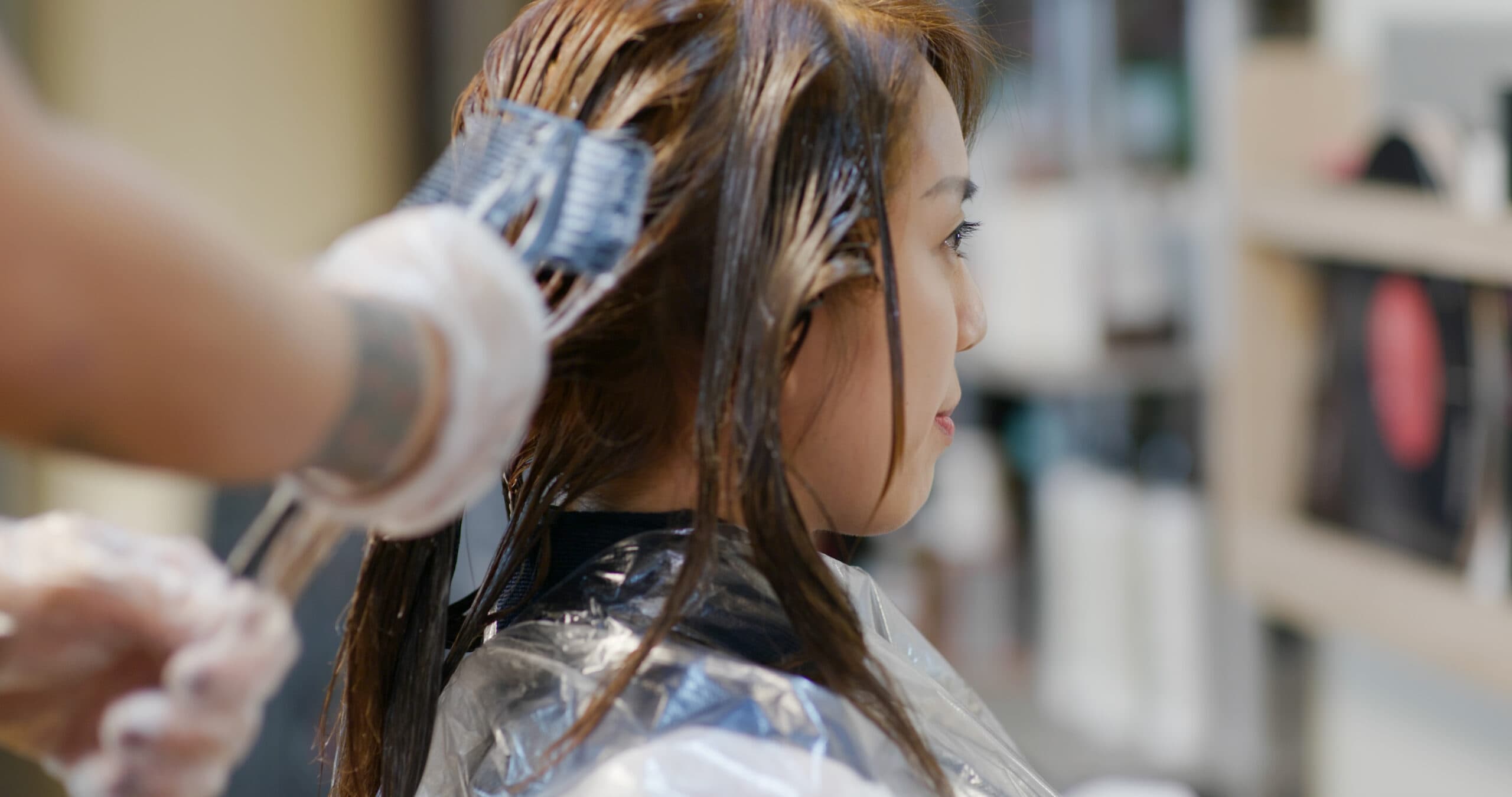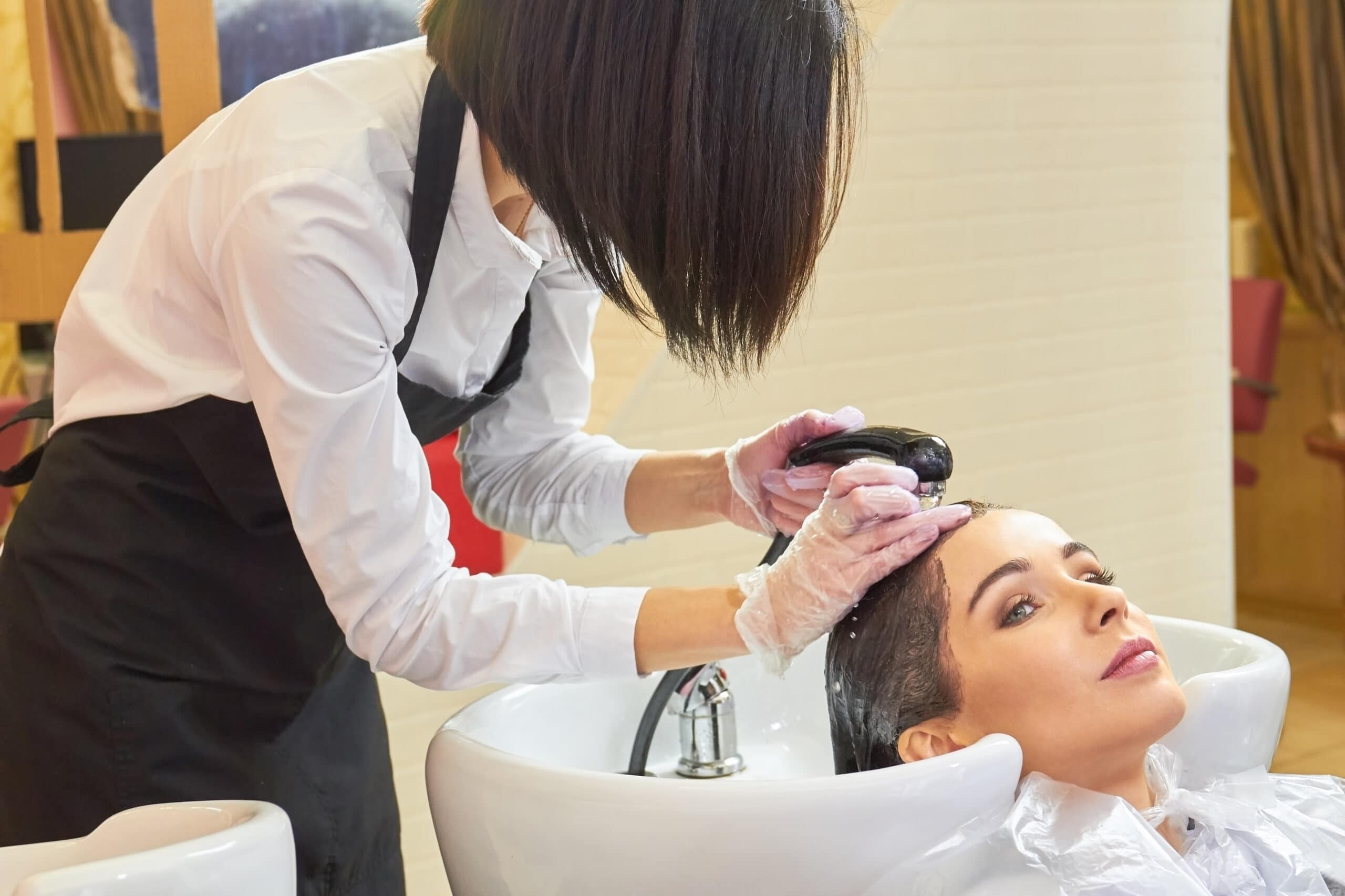Balayage and ombre are two commonly mixed up terms and for good reason. They both are colors that fade from the root to a different color on the ends. Even though they are very similar colors, there are a few key differences.
It’s also important to know that balayage and ombre are within the same family of coloring techniques. They both use a hand-painted method to create a gradient effect in the hair. They simply differ in the placement and saturation of color with this technique. Below are the exact differences and how to choose which one you are wanting.
Main Differences Between Ombre and Balayage
- Ombre stands out more, whereas balayage is more natural-looking
- Ombre is two-toned and ends up a different color, whereas balayage is a blended highlighted color
- Ombre is expensive, whereas balayage can be more affordable
- Ombre uses a teasing technique to create a gradation, whereas balayage uses a sweeping technique to create a gradation
- Ombre can use any color, whereas balayage can be restricted on colors
- Ombre grows out faster, whereas balayage grows out slowly
Desired Result Things to Consider
Although these two colors are very similar, you can achieve two very different looks with balayage or ombre. There isn’t really any disadvantage to one or the other with the result. Both are still in fashion and it solely depends on what you like.
Price
Both balayage and ombre are relatively pricier than any other color that you can get. You should be prepared to spend anywhere from $100 to $400 at a salon depending on what you are wanting. You may be able to customize your color to keep it on the lower end of the spectrum.
Longevity
One of the biggest advantages of having balayage or ombre color is that you can go a really long time in between touch-ups. In most cases, you can even let it grow all the way out without ever touching it up again and it will never look bad. Depending on how you are wanting your color to initially look, one technique may last longer than the other.
Ombre
Ombre was the first gradient color to come into fashion about 10 years ago. Ever since it has evolved into many different looks and techniques. It has even made its way into nail art, baking, and home decor.
Results
If you are looking for something more striking and want to stand out, ombre is for you. It’s a two-toned color that fades from one color to another contrasting color. There is a distinct color difference.
Unlike balayage, you can do a large array of colors with an ombre. Since the ends are completely saturated in color you can go darker, use vibrant, or go full blonde on the ends. There won’t be any lowlights of your root color going through the ends obstructing the color you choose.
This is not a natural look like balayage. There is no dimension. Usually, the roots are your natural color or darker color that evenly fades to another color on the ends. Your ombre can start closer to your root or halfway down the hair, depending on how striking you want the color.
Technique
When applying an ombre color, a teasing technique is usually used to create the gradation. Since the entirety of the ends of the hair is a different color than the top, the ends must be completely saturated with color. Therefore, it is extremely difficult to create a blend by simply painting it on.
This teasing technique works by pulling up random hairs. These random hairs that were teased up will be colored lower on the strand than the hairs that did not get pulled up. When the hair is combed back out after the process is finished, it has created a seamless staircase effect with each strand that makes the color blend from one to another.
Ombre is most often done in horizontal sections. When using horizontal sections, your colorist can be sure to start the gradation in the same area of hair. If your ombre started at different lengths in each section, you would get more of a highlighted effect rather than a two-toned color.
Price
Since the entirety of your ends are colored and blended up into your root, ombre most of the time costs more than balayage. You need more color to fully saturate the ends. Every section of hair is also being colored rather than highlighted.
Ombre also isn’t extremely versatile like balayage. The majority of times you need to color your whole head with ombre for it to look good. The only times you wouldn’t is if you were doing ombre peek-a-boo chunks. It’s very rare that you would ombre in peak-a-boos over balayage them though.
You could make it cheaper by only doing the underneath section of your hair or starting the blend lower on your hair. Less hair color means less color used and less time spent coloring it. These options don’t usually last as long though and will need a touchup sooner.
Longevity
Ombre tends to not last quite as long as balayage. It still has an easy grow-out that won’t look bad for a long time. It usually starts to blend into a new color lower in the hair and has a smaller blending area than balayage. For this reason, it will grow out faster than balayage will.
Also, it does not look as great once it starts getting to a certain point of growth. Especially if you regularly trim your hair. Once it gets towards the bottom of your hair, it starts either looking a little splotchy or looking more like a dip dye depending on your haircut.
You could make your ombre last longer by starting the blend up higher on your hair. Starting the ombre a few inches from your roots rather than near the middle of your length could give you an extra 3 to 4 months before you need a retouch. Either way, your ombre should last 6 to 9 months before it needs a retouch or color change.
Balayage
Balayage is a newer spin-off from Ombre. It was created to look like you’ve spent a lot of time outdoors or to mimic the look of a child’s natural highlights. There are many ways to customize balayage to make you as bright or as contrasted as you would like.
Results
Balayage is a blended, natural-looking color. It’s more of a form of highlighting that gets lighter at the bottoms and fades up to your root. Like highlights, balayage does not color every single hair. It leaves some of your natural or root colors throughout as a lowlight.
You will get a lot more dimension with balayage. From the color being painted on instead of fully saturating the hair, you will get multiple tones of color throughout. Balayage usually comes up higher on the head as well. It can be painted up to an inch to 3 inches from the root.
Unlike ombre, you are restricted on the colors you can do with balayage. Since balayage does not fully saturate the hair, you will not get maximum lift. This makes it impossible to do pastels or other lighter vivid colors. Also, going darker with your balayage often looks splotchy.
Even though you do not have as much of a choice in color, balayage is much more customizable. You can do as little or as much as you want from a few face-framing pieces to full-on dimensional blonde. Your stylist can also paint it where it lays best on your hair and is flattering on you.
Technique
The word Balayage is French for “sweeping”. It was given this name because when a stylist does balayage, they are sweeping the color onto your hair. This technique takes quite a bit of practice and expertise to master.
When sweeping the color on, the color does not fully saturate the whole section of hair. It simply lays on top of the section and is blended down to full saturation on the ends. This creates your balayage’s dimension. Depending on what result you want, the colorist will either balayage every section of your hair or diagonal, triangular sections.
Your colorist may tease your hair before balayage it as well. This is usually only for people with straight or thin hair. However, they may choose to tease anyone’s hair. This is mostly a personal preference for your colorist but overall helps blend your balayage further.
Price
Balayage can be cheaper or more expensive than ombre depending on the result you’re looking for. However, it is still one of the more expensive hair colors that you can get. You should expect to pay at least $100 and at most $300.
The nice thing about balayage is you can customize it. Meaning if you only do a few pieces of balayage it will be closer to $100. If you are looking for an all-over effect you’ll be paying closer to $300. Depending on how much balayage you get, for instance, whole head, half head, or face-framing, the price will fluctuate.
Even though you may not be using as much color as an ombre in some cases, the price of an all-over balayage is still pretty close to an ombre. Balayage takes a lot more skill and experience to achieve than ombre does. Your stylist uses those skills and experience to blend and find the right placement, which you don’t need much of with ombre.
Longevity
Balayage will most likely last longer than ombre. The blended section is much longer than with ombre, giving you less of a line where the color changes in the hair. You could grow your balayage all the way out without ever coloring it again and it will always look good.
Also since you have your natural going throughout the hair, it won’t ever look splotchy once it starts getting to the ends as ombre does. It will always look like you just have a speckle of sun-kissed hair. Your natural color will help the balayage blend in when it starts getting really long.
If you do want to keep your balayage touched up rather than growing it out, expect to have it touched up every 4 to 6 months. You don’t want to touch it up too often or else it will become really blonde. Also, it is easier for your stylist to create a new blend from the blonde already there to your natural if it has grown out a few inches.
FAQ’s
Answer: Both balayage and ombre are relatively expensive hair colors. Usually, they run around the same price and can cost anywhere from $150 to $300. However, balayage can be customized more to make it cheaper. For example, you can do a few balayage highlights around your face for about $80 to $150.
Answer: Both ombre and balayage can look great on straight hair if done well. However, balayage tends to look better on straight hair. It creates a little more dimension, whereas an ombre could look like a horizontal line of color was created on straight hair.
Answer: Both balayage and ombre have low maintenance grow out. Although balayage can last longer than ombre. Balayage is highlighted higher on the head than ombre comes up. Ombre usually starts fading to a new color around the middle of the hair making it grow out faster.
Answer: You can still find ombre hair colors in many high fashion industries. It’s also a great way to introduce yourself to fashion colors. Ombre in vivid color is less of a commitment than color your whole head with vivids.
Answer: Most of the time bleach is used to create balayage and ombre. The only time it is not used is if you are ombreing in a darker color than your original hair or you have no color in your hair and only want to be slightly lighter.
Conclusion: Which One Should You Get?
If price and longevity are the most important factors for you, balayage is the way to go. You can customize it to make it as cheap as possible or last as long as possible. Your stylist can also personalize it to make it look best with the way your hair lays and to look natural on you.
Even though balayage is logistically better than ombre, you can not achieve the same look with balayage as you can with ombre. Ultimately it is up to you and what you are looking for. If you want vibrant or something more contrasting, you’ll need to go with an ombre. If you want natural and blended, you need balayage.
For more inspirational readings, check out:
-
How To Find The Best Burgundy Hair Dye [2022]: Top 5 Hair Dye Products
-
11 Best Blue Ombre Hair Ideas Guide [2022]: Which Shade Is Best?




